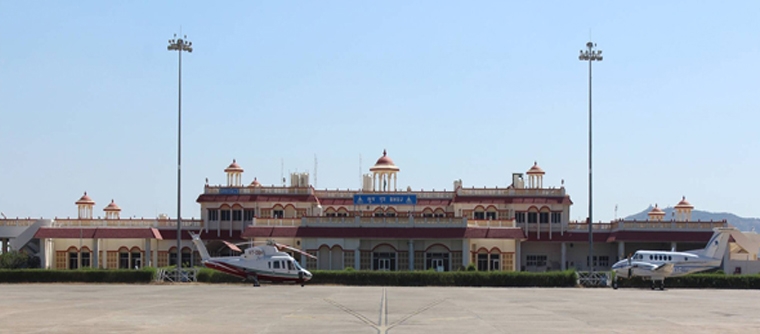
Day 01 : Bhuj
Arrive at Bhuj Meet to Greet and Transfer to hotel. rest of the hotel. Evening visit Local Market area. O/n stay at Hotel.
Our Expert at Your Service

Day 01 : Bhuj
Arrive at Bhuj Meet to Greet and Transfer to hotel. rest of the hotel. Evening visit Local Market area. O/n stay at Hotel.
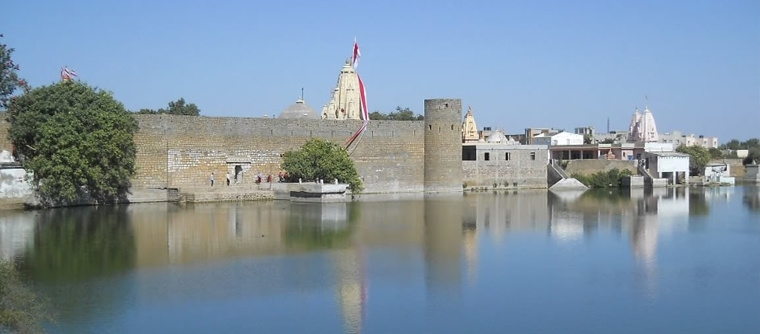
Day 02 : Bhuj - Nakhatrana
Early morning proceed for Narayan Sarovar. Narayan Sarovar is home to a wide array of wildlife, including many species (15 of which are considered threatened) of mammals, reptiles, and birds. The principle species here is the chinkara, an Indian gazelle. In this harsh landscape, only animals well-adapted to the desert climate can thrive, with extreme heat, high winds, and frequent storms. For this reason, many species can be seen here that are not easy to find elsewhere.
Most of Narayan Sarovar is desert thorn forest and scrub forest, with some seasonal wetlands and dry savannah-type vegetation as well. Gorad and babul are the prevailing plant species; gorad in the east and babul in the west. Also found among the 252 species of flowering plants in the sanctuary are hermo, ber, pilu, thor, gugal, salai, ingorio, kerdo, carissa, and the invasive “gando baawal” (prosopsis juliflora), though less so than in other nearby areas.
The endangered chinkara is the only gazelle in the world with horns on both males and females. Of the roughly 7000 chinkaras known to exist, 80% of them live in Kutch, and since their primary habitat is the scrub and thorn forests so common here. October to March is the time to visit.
O/n stay at Nakhatrana.
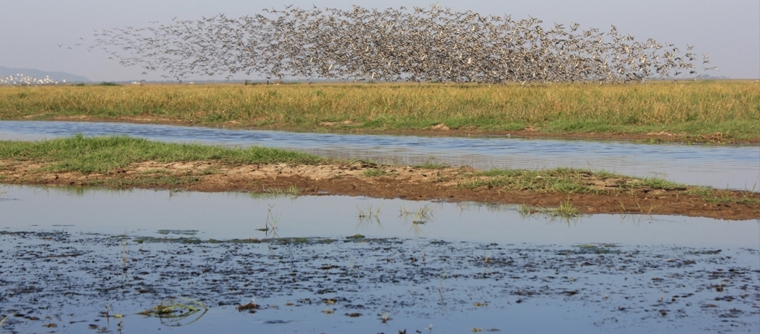
Day 03 : Nakhatrana
Morning visit Indian Bustard Sanctuary. The Kutch Bustard Sanctuary is one of the great wonders of wildlife in Gujarat. Kutch Bustard Sanctuary is located in proximity to Naliya which is under the district of Kutch. In Rainy season to the end of winters is the best time to enjoy this wondrous sanctuary. The most ideal way to enjoy this retreat is, taking a walk around the natures cradle while befriending various species of the Bustard family. Look around for the Black and Gray Francolin, the Spotted and Indian Sangrouse, Quails, Larks, Shrikes, Coursers and Plovers. And if you are lucky, you might catch fluttering glimpses of rare species of Stolicska’s Bushchat and White-naped Tit. If you keep walking northwards towards the coastal area of Jakhau during winters, you might get greeted by large flocks of flamingos, Herons, Egrets, Sandpipers and other birds dwelling in the salt-reservoirs and the creek. A climb up the watchtower and vigilance will surprise you with flocks of Indian Gazelle and wolfs spotting the entire landscape, while a drive around the sanctuary will acquaint you to the friendly nilgais.
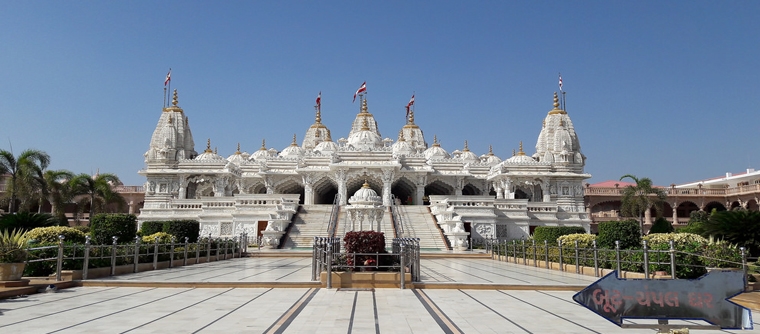
Day 04 : Bhuj – Jamnagar
Morning visit local sightseeing of Bhuj. Later driver to Jamnagar. O/n stay at Hotel.
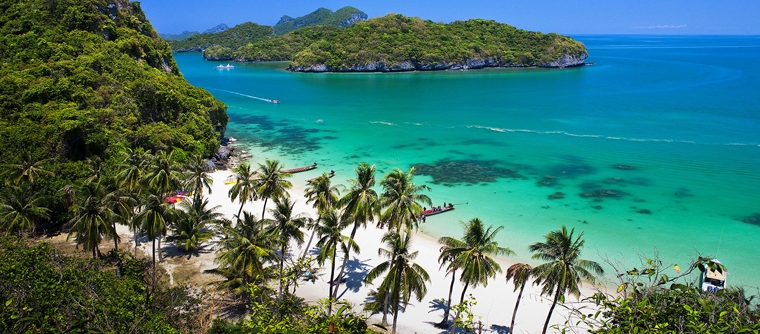
Day 05 : Jamnagar
Early morning proceed for Marine National Park - Gujarat has the distinction of creating the country’s first Marine National Park spread over an area of nearly 458 sq.kms. in the Gulf of Kutch, 30 km. from Jamnagar. Here corals create fantasies in stone and are the master builders of the Park. Their limestone fortresses – those found near the Pirotan Islands and the rich moist deciduous forests like those found in the dense forests of the Danes. One of the most threatened birds, the great Indian bustard finds a refuge in certain pockets of protected areas. The world’s only four-horned antelope, the chowsingha is found here in healthy numbers. One of the largest herds of blackjacks grace the grasslands of Velavadar and till recently Gujarat was the place where flamingos nested in huge numbers. Dugong, a marine mammal which resembles a seal, along with the rare Borolo species have found home in the protected areas of the Marine National Park. Here you will find plants that look like animals and animals that look like plants. Turtles, shrimp, sponge, eels, sea urchin lurk among the corals and huge schools of fish create a brilliance of colors that are unknown, unseen and unimaginable to us.
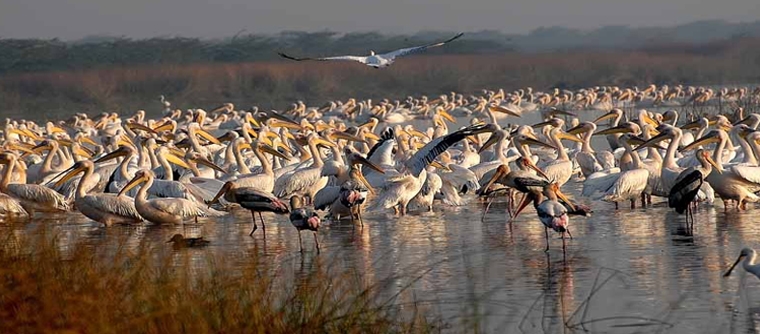
Day 06 : Jamnagar
Khijadia Bird Sanctuary is a unique wetland area with sea water on one side and fresh water on one side. This area which is about 12 km from Jamnagar (Gujarat), was declared as a Sanctuary on 6th November 1982. Before independence, a check dam had been built for storing the waters of the Ruparen river just near the sea, so gradually over the years with fresh water of the rain and river on one side and salt water of the sea on the other side, a unique area came up where both varieties of vegetation came up, gradually, birds and animals also started flocking and roosting here. The area of this Sanctuary is 605 Hectares. Some of the notable birds found here are Black Ibis, Black-winged Kite, Brahminy Kite, Pheasant-tailed Jacana, Great Thick-knee, Common Greenshank, Grey Francolin, Imperial Eagle, Indian Pond Heron, Little Tern, Black-tailed Godwit, Comb Duck, Common Crane, Common Teal, Dunlin, Garganey, Marsh Harrier, Northern Pintail, Shoveler, Eurasian Wigeon, Pale Harrier, Demoiselle Crane, Sanderling and Darters. The other wild life found here are Blue Bulls, Jackal, Wolf, Jungle Cat, Mongoose, Rabbits, Cobra, etc.O/n stay at Jamnagar
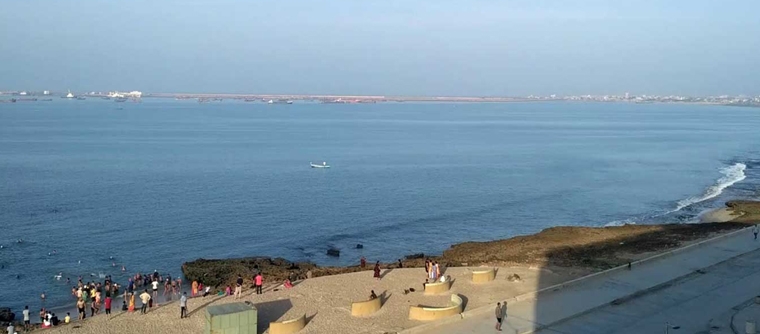
Day 07 : Jamnagar – Porbandar
After taking B/F proceed for Porbandar . Check into hotel. rest of the leisure time. O/n stay at Porbandar.
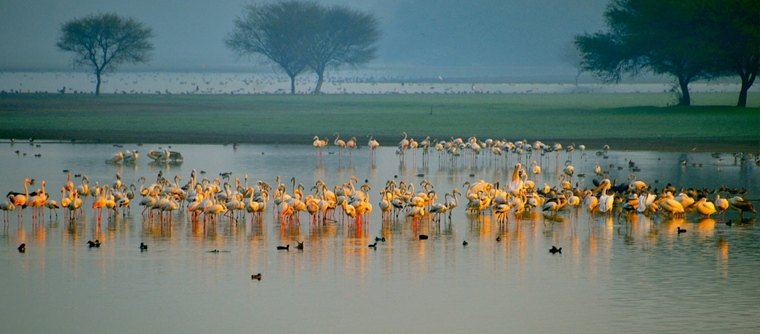
Day 08 : Porbandar – Gir
Early morning proceed for visit Porbandar Bird Sanctuary – It is located amid the city of Porbandar flaunting the co-existence of man and nature. Spread over an area of 1 square kilometer this unique water dwelling, surrounded by trees and plants was affirmed as a sanctuary in the year 1988. Varied species of birds in all shapes and sizes fly in every year enlivening the area with varied colors; patterns and making this zone a home and their nesting ground. Water birds are often seen splashing in the freshwater lake while the sky touching flights of certain birds bedecks the firmament. Flamingos, Grebes, Pelicans, Ducks and geese, Avocets, Coots, Cormorants, Herons, Egrets, Bittern, Storks, Ibis, Spoonbill, Cranes, Whistling Teals, Gulls, Terns, Jacanas, Ruff, Red shanks, Indian roller and many other varieties of winged creatures are seen in this area.Later drive to Gir. O/n stay at Gir.
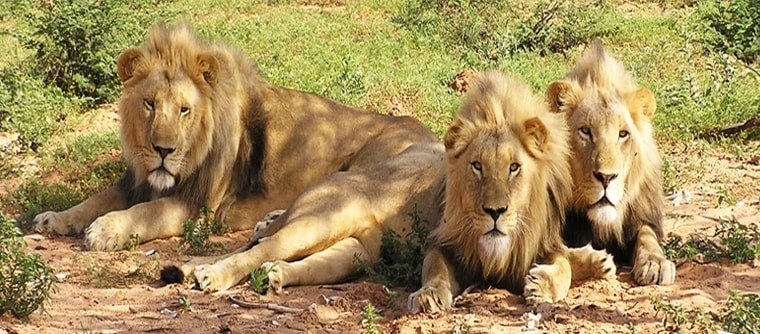
Day 09 : Gir
Enjoy Morning & evening safari at Gir National Park. Sasan Gir Lion sanctuary is home of some 300 Asiatic Lions. Sasan Gir is only place in world outside African continent where lion can be seen in its natural habitat. Gir Widllife Sanctaury is the last refuge of Asiatic lions in India and the lion population residing in the park is a little over 300. Now lions only in small fractions in some parts of the world. Over night at Gir.
Day 10 : Gir – Bhavnagar
Again Morning safari at Gir National Safari. Then drive to Bhavnagar. Over night stay at Hotel.
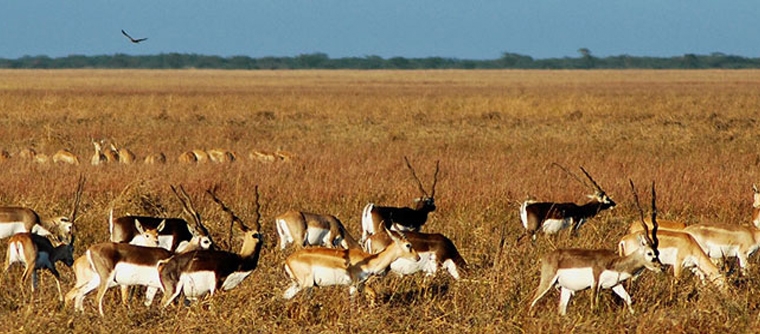
Day 11 : Bhavnagar – Velavadar – Bhavnagar
Morning proceed for Velavadar. Velavadar National Park, also known as Velavadar Black Buck Sanctuary is situated in the Bhal region of Saurashtra is a unique grassland ecosystem that has attracted fame for the successful conservation of the blackbuck, the wolf and the lesser florican. Overnight stay at Bhavnagar.
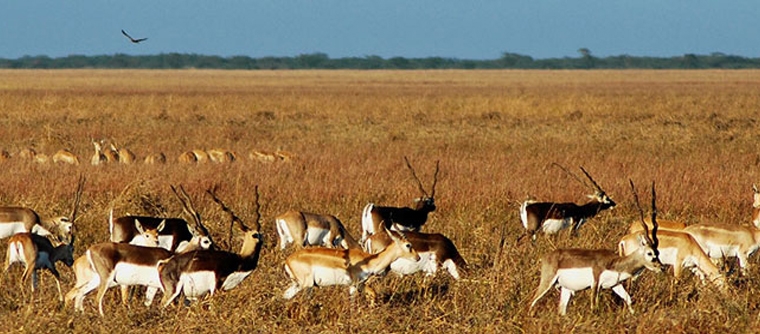
Day 12 : Bhavnagar – Velavadar – Dasada
Again morning Safari at visit Velavadar National Park. Continue drive to Dasada (Little Rann of Kutch) . The Little Rann of Kutch Wildlife sanctuary can be from Dasada, 93 kms from Ahmedabad. This is one of the largest wildlife sanctuaries in India, spanning some 4950 sq ft in area, and comprising a range habitat from saline desert plains, arid grasslands, rocky and thorn scrub to lakes and marshes. Check in to the hotel & Overnight.
Day 13 : Dasada
Enjoy morning safari at Little Rann Of Kutch viewing rarest wild asses.Wild ass sanctuary.The sanctuary is well known for its group of the stale joke brown Asiatic (Wild ass), which does not live elsewhere in Indian lowlands. We can see with Little Rann of Kutch blackbuck (Indian antelope), nilgai or blue bull (India’s largest antelope) and the graceful chinkara (Indian gazelle) are other mammals. The main carnivores of the Little Rann of Kutch are the endangered Indian wolf, desert fox, Indian fox, jackals, desert and jungle cats, and a few hyenas; also we can see during the visits flamingoes, pelicans, ducks, cranes and storks.
Day 14 : Dasada – Balaram
Morning proceed for Balaram. Enroute visit Patan is famous for Patola weaving. Salvi community of people is working with Patola. Modhera : Built in 1026 ad during the reign of the solanki king bhima -1, modhera Surya mandir marks the peak of revolution in indo-aryan hindu temple form Typology. It is positioned in such a manner that the rising sun rays illuminate the deity in the inner most sanctum sanctorum through the main Entrance at the time of equinox only. Overnight stay at Balaram Palace.
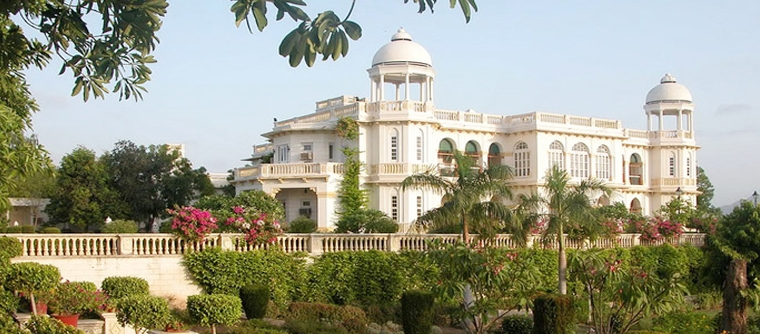
Day 15 : Balaram (Jessor Sloth Bear Sanctuary)
Morning proceed for Jessore Sloth Bear Sanctuary is situated in the Banaskantha district, 45 kms. from Palanpur. Declared as Wildlife Sanctuary in May 1978, this 180.66 sq.km. forest tract of Jessore hill and adjoining areas is endowed with several rare and endangered species of flora and fauna. The sanctuary is known more for the endangered Sloth Bear. Overnight stay at Balaram Palace.

Day 01 : Bhuj
Arrive at Bhuj Meet to Greet and Transfer to hotel. rest of the hotel. Evening visit Local Market area. O/n stay at Hotel.

Day 02 : Bhuj - Nakhatrana
Early morning proceed for Narayan Sarovar. Narayan Sarovar is home to a wide array of wildlife, including many species (15 of which are considered threatened) of mammals, reptiles, and birds. The principle species here is the chinkara, an Indian gazelle. In this harsh landscape, only animals well-adapted to the desert climate can thrive, with extreme heat, high winds, and frequent storms. For this reason, many species can be seen here that are not easy to find elsewhere.
Most of Narayan Sarovar is desert thorn forest and scrub forest, with some seasonal wetlands and dry savannah-type vegetation as well. Gorad and babul are the prevailing plant species; gorad in the east and babul in the west. Also found among the 252 species of flowering plants in the sanctuary are hermo, ber, pilu, thor, gugal, salai, ingorio, kerdo, carissa, and the invasive “gando baawal” (prosopsis juliflora), though less so than in other nearby areas.
The endangered chinkara is the only gazelle in the world with horns on both males and females. Of the roughly 7000 chinkaras known to exist, 80% of them live in Kutch, and since their primary habitat is the scrub and thorn forests so common here. October to March is the time to visit.
O/n stay at Nakhatrana.

Day 03 : Nakhatrana
Morning visit Indian Bustard Sanctuary. The Kutch Bustard Sanctuary is one of the great wonders of wildlife in Gujarat. Kutch Bustard Sanctuary is located in proximity to Naliya which is under the district of Kutch. In Rainy season to the end of winters is the best time to enjoy this wondrous sanctuary. The most ideal way to enjoy this retreat is, taking a walk around the natures cradle while befriending various species of the Bustard family. Look around for the Black and Gray Francolin, the Spotted and Indian Sangrouse, Quails, Larks, Shrikes, Coursers and Plovers. And if you are lucky, you might catch fluttering glimpses of rare species of Stolicska’s Bushchat and White-naped Tit. If you keep walking northwards towards the coastal area of Jakhau during winters, you might get greeted by large flocks of flamingos, Herons, Egrets, Sandpipers and other birds dwelling in the salt-reservoirs and the creek. A climb up the watchtower and vigilance will surprise you with flocks of Indian Gazelle and wolfs spotting the entire landscape, while a drive around the sanctuary will acquaint you to the friendly nilgais.

Day 04 : Bhuj – Jamnagar
Morning visit local sightseeing of Bhuj. Later driver to Jamnagar. O/n stay at Hotel.

Day 05 : Jamnagar
Early morning proceed for Marine National Park - Gujarat has the distinction of creating the country’s first Marine National Park spread over an area of nearly 458 sq.kms. in the Gulf of Kutch, 30 km. from Jamnagar. Here corals create fantasies in stone and are the master builders of the Park. Their limestone fortresses – those found near the Pirotan Islands and the rich moist deciduous forests like those found in the dense forests of the Danes. One of the most threatened birds, the great Indian bustard finds a refuge in certain pockets of protected areas. The world’s only four-horned antelope, the chowsingha is found here in healthy numbers. One of the largest herds of blackjacks grace the grasslands of Velavadar and till recently Gujarat was the place where flamingos nested in huge numbers. Dugong, a marine mammal which resembles a seal, along with the rare Borolo species have found home in the protected areas of the Marine National Park. Here you will find plants that look like animals and animals that look like plants. Turtles, shrimp, sponge, eels, sea urchin lurk among the corals and huge schools of fish create a brilliance of colors that are unknown, unseen and unimaginable to us.

Day 06 : Jamnagar
Khijadia Bird Sanctuary is a unique wetland area with sea water on one side and fresh water on one side. This area which is about 12 km from Jamnagar (Gujarat), was declared as a Sanctuary on 6th November 1982. Before independence, a check dam had been built for storing the waters of the Ruparen river just near the sea, so gradually over the years with fresh water of the rain and river on one side and salt water of the sea on the other side, a unique area came up where both varieties of vegetation came up, gradually, birds and animals also started flocking and roosting here. The area of this Sanctuary is 605 Hectares. Some of the notable birds found here are Black Ibis, Black-winged Kite, Brahminy Kite, Pheasant-tailed Jacana, Great Thick-knee, Common Greenshank, Grey Francolin, Imperial Eagle, Indian Pond Heron, Little Tern, Black-tailed Godwit, Comb Duck, Common Crane, Common Teal, Dunlin, Garganey, Marsh Harrier, Northern Pintail, Shoveler, Eurasian Wigeon, Pale Harrier, Demoiselle Crane, Sanderling and Darters. The other wild life found here are Blue Bulls, Jackal, Wolf, Jungle Cat, Mongoose, Rabbits, Cobra, etc.O/n stay at Jamnagar

Day 07 : Jamnagar – Porbandar
After taking B/F proceed for Porbandar . Check into hotel. rest of the leisure time. O/n stay at Porbandar.

Day 08 : Porbandar – Gir
Early morning proceed for visit Porbandar Bird Sanctuary – It is located amid the city of Porbandar flaunting the co-existence of man and nature. Spread over an area of 1 square kilometer this unique water dwelling, surrounded by trees and plants was affirmed as a sanctuary in the year 1988. Varied species of birds in all shapes and sizes fly in every year enlivening the area with varied colors; patterns and making this zone a home and their nesting ground. Water birds are often seen splashing in the freshwater lake while the sky touching flights of certain birds bedecks the firmament. Flamingos, Grebes, Pelicans, Ducks and geese, Avocets, Coots, Cormorants, Herons, Egrets, Bittern, Storks, Ibis, Spoonbill, Cranes, Whistling Teals, Gulls, Terns, Jacanas, Ruff, Red shanks, Indian roller and many other varieties of winged creatures are seen in this area.Later drive to Gir. O/n stay at Gir.

Day 09 : Gir
Enjoy Morning & evening safari at Gir National Park. Sasan Gir Lion sanctuary is home of some 300 Asiatic Lions. Sasan Gir is only place in world outside African continent where lion can be seen in its natural habitat. Gir Widllife Sanctaury is the last refuge of Asiatic lions in India and the lion population residing in the park is a little over 300. Now lions only in small fractions in some parts of the world. Over night at Gir.
Day 10 : Gir – Bhavnagar
Again Morning safari at Gir National Safari. Then drive to Bhavnagar. Over night stay at Hotel.

Day 11 : Bhavnagar – Velavadar – Bhavnagar
Morning proceed for Velavadar. Velavadar National Park, also known as Velavadar Black Buck Sanctuary is situated in the Bhal region of Saurashtra is a unique grassland ecosystem that has attracted fame for the successful conservation of the blackbuck, the wolf and the lesser florican. Overnight stay at Bhavnagar.

Day 12 : Bhavnagar – Velavadar – Dasada
Again morning Safari at visit Velavadar National Park. Continue drive to Dasada (Little Rann of Kutch) . The Little Rann of Kutch Wildlife sanctuary can be from Dasada, 93 kms from Ahmedabad. This is one of the largest wildlife sanctuaries in India, spanning some 4950 sq ft in area, and comprising a range habitat from saline desert plains, arid grasslands, rocky and thorn scrub to lakes and marshes. Check in to the hotel & Overnight.
Day 13 : Dasada
Enjoy morning safari at Little Rann Of Kutch viewing rarest wild asses.Wild ass sanctuary.The sanctuary is well known for its group of the stale joke brown Asiatic (Wild ass), which does not live elsewhere in Indian lowlands. We can see with Little Rann of Kutch blackbuck (Indian antelope), nilgai or blue bull (India’s largest antelope) and the graceful chinkara (Indian gazelle) are other mammals. The main carnivores of the Little Rann of Kutch are the endangered Indian wolf, desert fox, Indian fox, jackals, desert and jungle cats, and a few hyenas; also we can see during the visits flamingoes, pelicans, ducks, cranes and storks.
Day 14 : Dasada – Balaram
Morning proceed for Balaram. Enroute visit Patan is famous for Patola weaving. Salvi community of people is working with Patola. Modhera : Built in 1026 ad during the reign of the solanki king bhima -1, modhera Surya mandir marks the peak of revolution in indo-aryan hindu temple form Typology. It is positioned in such a manner that the rising sun rays illuminate the deity in the inner most sanctum sanctorum through the main Entrance at the time of equinox only. Overnight stay at Balaram Palace.

Day 15 : Balaram (Jessor Sloth Bear Sanctuary)
Morning proceed for Jessore Sloth Bear Sanctuary is situated in the Banaskantha district, 45 kms. from Palanpur. Declared as Wildlife Sanctuary in May 1978, this 180.66 sq.km. forest tract of Jessore hill and adjoining areas is endowed with several rare and endangered species of flora and fauna. The sanctuary is known more for the endangered Sloth Bear. Overnight stay at Balaram Palace.
| Total basic cost | 0 | ||||
| GST (5%) | 0 | ||||
| Total cost with GST | 0 |
Payments
For the services contracted, some advance payment should be made to hold the booking on a confirmed basis and the balance amount can be paid either before your departure from your country or upon arrival in India,
but definitely before the commencement of the services.Swosti Travels hold the right to decide upon the amount to be paid as an advance payment, based on the nature of services and the time left for the commencement of the services. Apart from the above in some cases like special train journeys, hotel or resort bookings during the peak season (X-Mas, New Year) full payment is required to be sent in advance.
Mode of Payment
Overseas advance payment can be made through wire transfer to our bank or through Mail Authorization through Master/Visa Debit/credit card. Once you arrive in India, the payment can be made through currency notes
or travelers cheque or through Master/Visa credit card. In case of payment through credit card, the bank charges-as applicable-would be levied over and above the total amount.
Liability
Swostiindia.com, while undertaking tours, transportation, hotel accommodation and other travel services only acts as an agent on the clear understanding that it shall not be, in any way, responsible or liable for any accident, damages, loss, delay or inconvenience caused in connection with the travel facilities arranged by the company, its employees or agents. All bookings are accepted and executed with utmost care; however, no responsibility is undertaken for any change or
deviation on account of factors beyond our control. Swostiindia.com reserves the right to modify any arrangements required by and made on behalf of clients and to cancel the same without prior notice.



Swosti Travels & Exports Pvt.Ltd
103, Janpath Rd, Master Canteen Area, Kharabela Nagar,Bhubaneswar, Odisha 751001
Email: tours.int@swosti.com
Mob: 9338091727/9938287027
Swosti Travels & Exports Pvt.Ltd
19, Netaji Subhash Road,3rd Floor, Standard Chartered Bank Building,
Room # 12 B,Kolkata – 700 001
Email: kolkata@swosti.com, bmkol@swosti.com
Mob: 9331094855, 9331256944
Swosti Travels & Exports Pvt.Ltd
Utkalika Building, 03 rd Floor, State Emporia Complex,B/4,Baba Kharag Singh Marg,New Delhi- 110001
Email: delhi@swosti.com
Mob: 9938287027